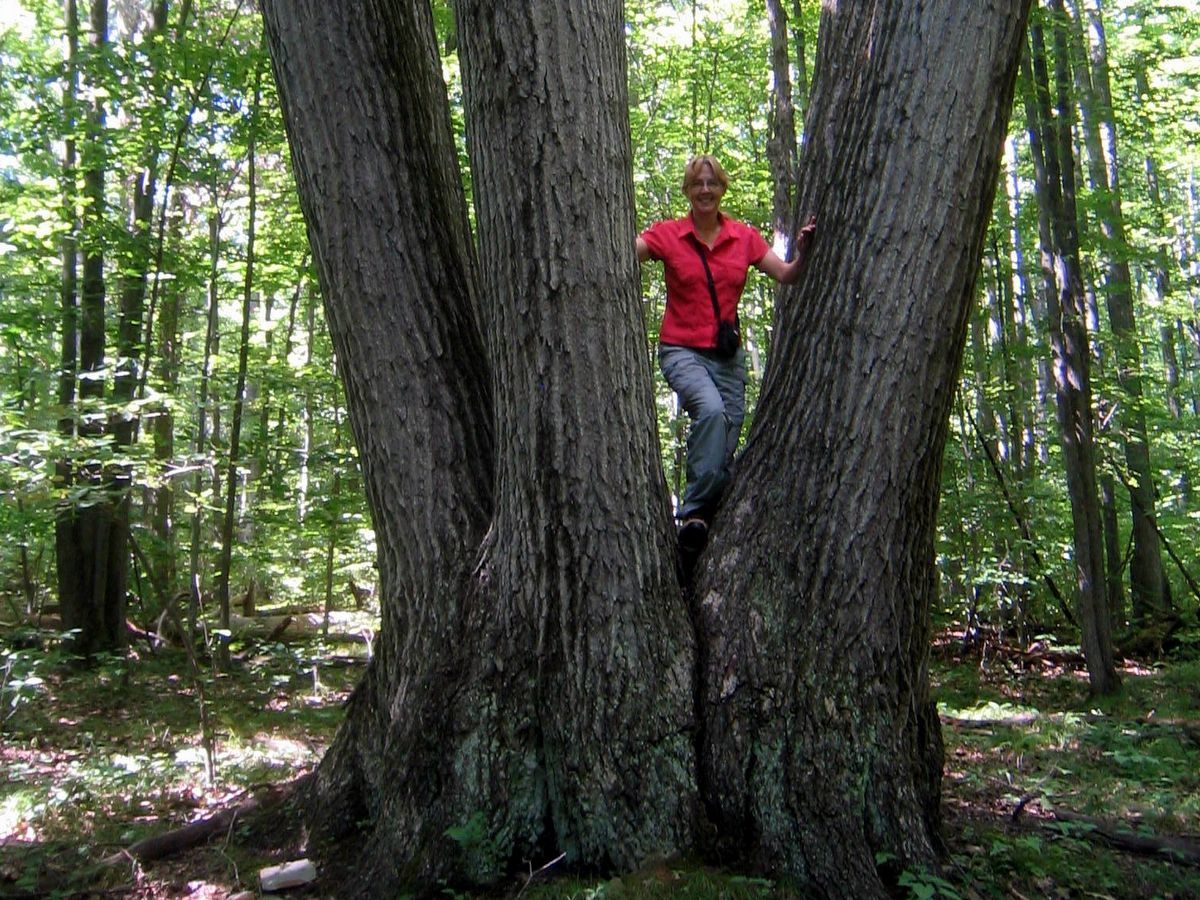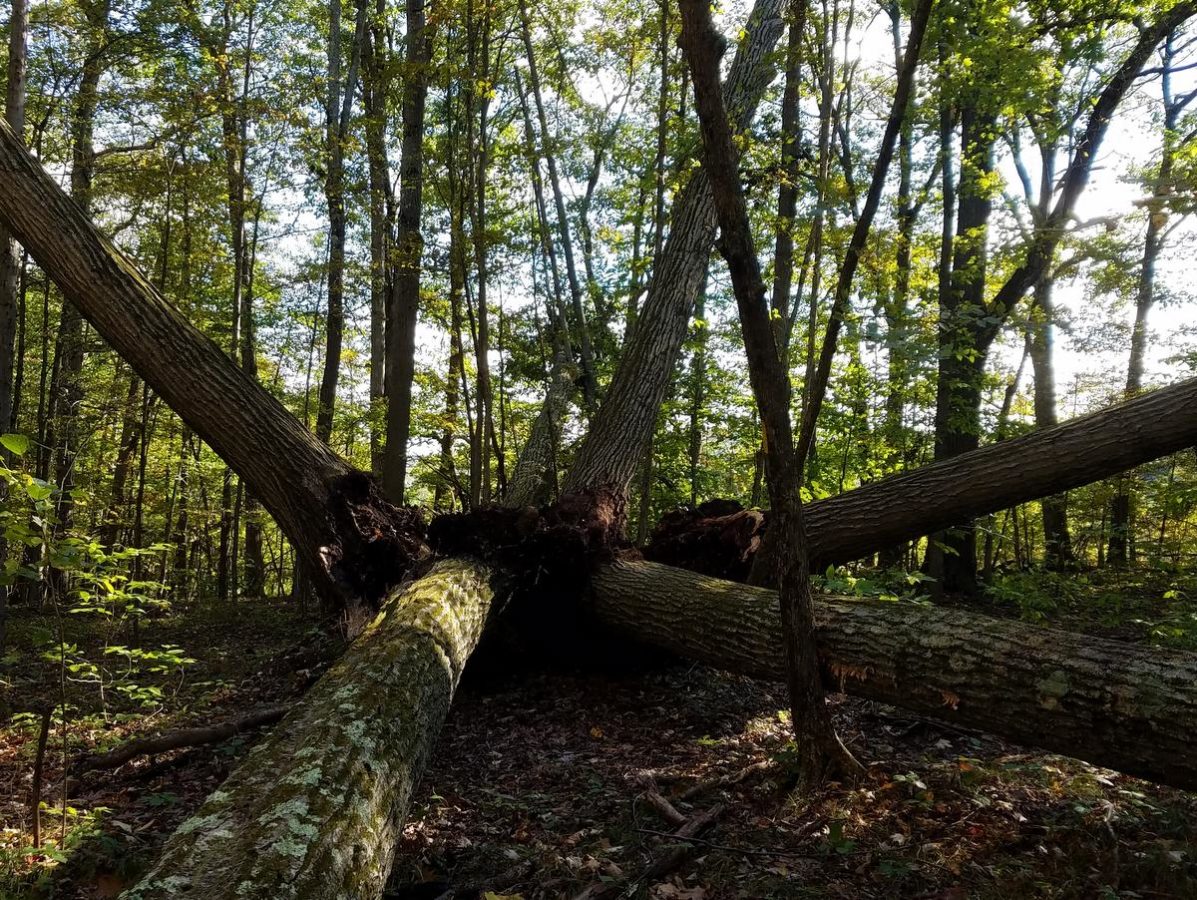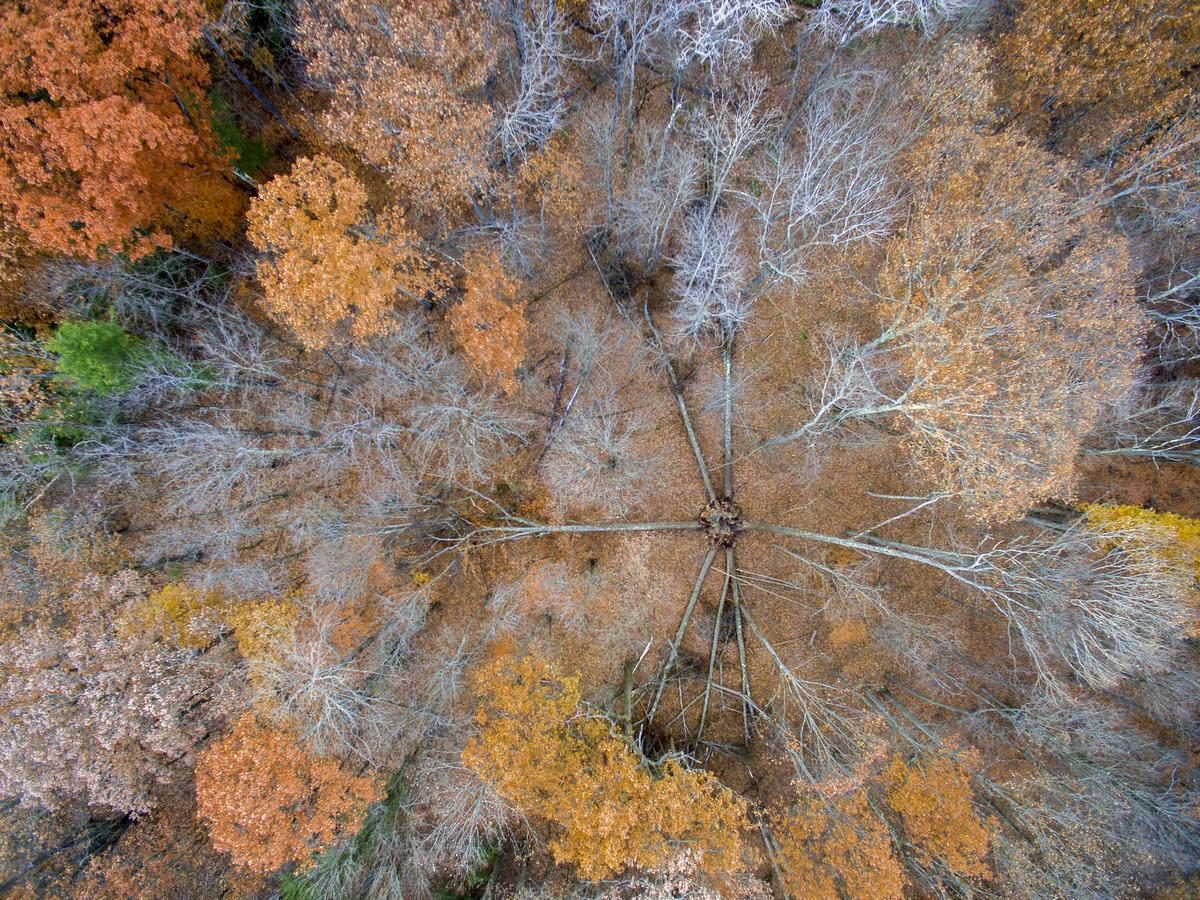Our hero has no voice, nor even a beating heart, but still its life tells an epic true story – a tale of humble origins, devastating misfortune, a remarkable comeback, years of glory, and ultimately, downfall.
This story began many decades ago with an acorn falling to earth on Logan Hill in Candor. It germinated and grew into a red oak tree. Then a person came and cut it down.
But the red oak, like many other tree species, had evolved a response to such catastrophic injury. Even as a mere stump, it retained stored energy in its roots, as well as living growth tissue called meristem. The truncated tree urgently rallied these remaining resources to create new photosynthesizing capacity.
Multiple shoots resprouted from the bark of the cut stump. These shoots soon bore leaves – perhaps the largest leaves that the tree would ever have, all the better to ramp up photosynthesis as quickly as possible.
In time, the shoots thinned out, leaving only the hardiest six. Over the next several decades, these trunks took on a tidy symmetry and gentle outward lean, each claiming sunlight and shunning the shadows cast by others.
Eventually the base expanded to about seven feet across. Each of the six trunks attained its own diameter of more than two feet. Each grew to about 90 feet tall. And that is how this red oak grew from an acorn and then again from a stump into surely the grandest, most distinctive tree among countless others at the Logan Hill Nature Preserve.
Then came this year’s rains. From July through September, the Southern Tier got about 24 inches of rain, more than twice the historical average for these months. It figures that the soil must have become completely saturated and perilously soft.
Then – the winds. The region got three straight days of high wind, averaging 20 miles per hour and gusting to 30, during October 11-13.
Maybe it was a particularly strong gust that did it. Maybe it was only the subtlest breeze, tipping the balance after the days and decades of cumulative stress, plus the simple force of gravity on those massive tilting trunks, that finally ripped the anchoring roots from their weakened substrate.
We can conjecture that one trunk fell first, destabilizing the base and triggering the immediate fall of the others. Four crashed all the way to the ground. The other two remain hung up in the branches of neighboring trees. Looking from above, we now see a gap in the textured canopy, almost perfectly round, with the trunks radiating from the center like spokes from a hub. Looking up from the ground, where just recently the sun barely peeked through the dense branches and leaves, we now see only open sky.
At the base of the fallen tree, a root cluster hangs exposed on each trunk. No root mass remains evident in the middle – only a deep pit full of water and mud. This suggests another part of the story. Whereas the tree before resprouting had one trunk and one set of roots, each of the multiple trunks after resprouting seems to have developed its own differentiated root system. Thus each trunk probably channeled the products of photosynthesis downward to its own network of roots, while in parallel, each root cluster sent water and nutrients up its own trunk.
So we could say that this tree’s life, almost cut short, not only recovered but became six lives in one, divergent yet entwined to the end.
The resilience of any tree has its limits. Further resprouting would be highly improbable after such total uprooting. The final chapter of the red oak’s story will likely unfold quietly, as the trunks decompose into hummock ridges and eventually vanish into the forest floor.
Meanwhile, neighboring trees will reach in, and the next generation of seedlings and saplings will rise from below. As their branches gradually close the canopy again, so too will they fill the sunny gap with new stories, each in its own way echoing the timeless themes of the red oak’s many lives in one – growth, loss, persistence, triumph, and ceaseless striving to the light.




